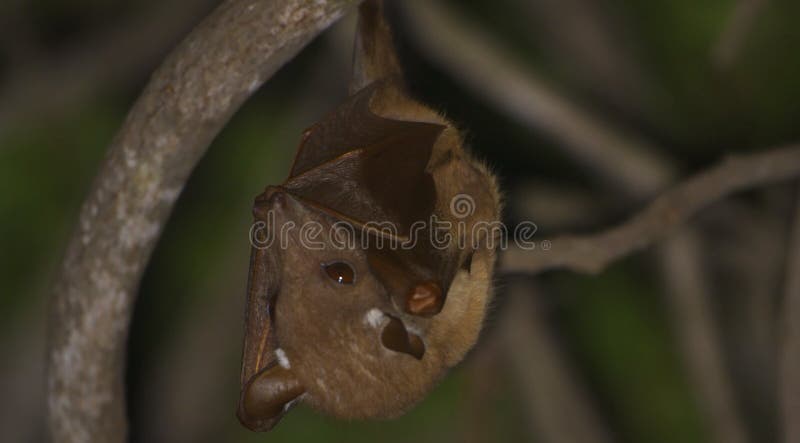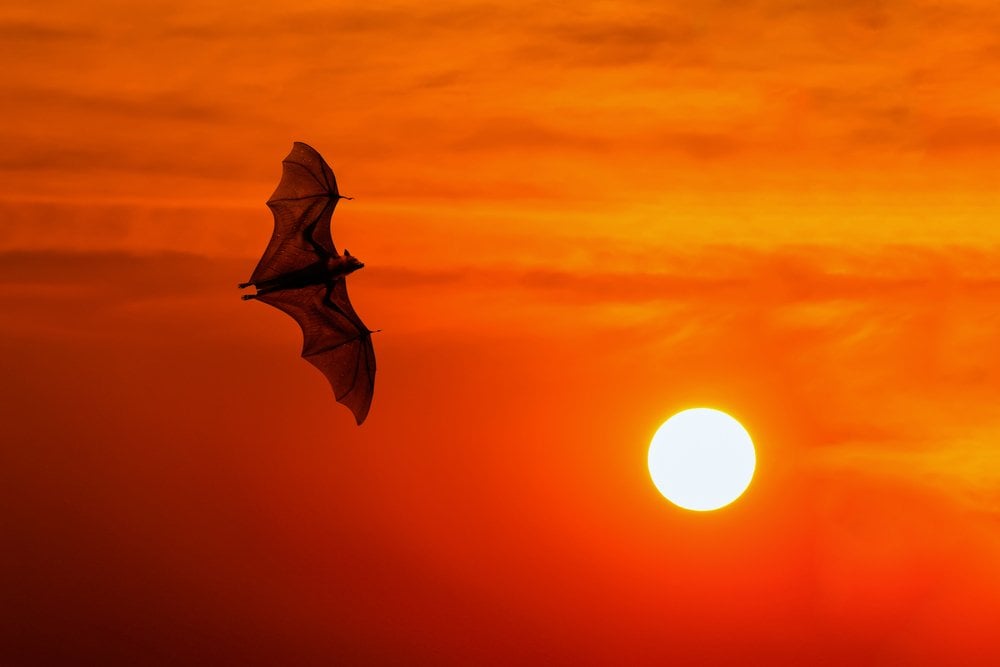
Internal relationships of African Pteropodidae based on combined evidence of mitochondrial and nuclear DNA. Clockwise from upper left: greater short-nosed fruit bat (Cynopterinae), Indian flying fox (Pteropodinae), Egyptian fruit bat (Rousettinae), eastern tube-nosed bat (Nyctimeninae). Taxonomy and evolution Taxonomic history They are also of interest to those involved in public health as they are natural reservoirs of several viruses that can affect humans. Megabats are a popular food source in some areas, leading to population declines and extinction. A quarter of all species are listed as threatened, mainly due to habitat destruction and overhunting. This low reproductive output means that after a population loss their numbers are slow to rebound. Most species have one offspring at a time after a pregnancy of four to six months. They reach sexual maturity slowly and have a low reproductive output. Other less common food resources include leaves, pollen, twigs, and bark. Most species are primarily frugivorous and several are nectarivorous.

With few exceptions, they are unable to echolocate, relying instead on keen senses of sight and smell to navigate and locate food. During the period of activity, they use flight to travel to food resources.

Members of some species roost alone, while others form colonies of up to a million individuals. During the period of inactivity, they roost in trees or caves. Most megabats are nocturnal or crepuscular, although a few species are active during the daytime. Megabats have several adaptations for flight, including rapid oxygen consumption, the ability to sustain heart rates of more than 700 beats per minute, and large lung volumes. Only members of one genus, Notopteris, have tails. They can be differentiated from other bats due to their dog-like faces, clawed second digits, and reduced uropatagium. Not all megabats are large-bodied nearly a third of all species weigh less than 50 g (1.8 oz). The megabat family contains the largest bat species, with individuals of some species weighing up to 1.45 kg (3.2 lb) and having wingspans up to 1.7 m (5.6 ft). Today, they are found in tropical and subtropical areas of Eurasia, Africa, and Oceania. Many of their lineages probably originated in Melanesia, then dispersed over time to mainland Asia, the Mediterranean, and Africa. They likely evolved in Australasia, with the common ancestor of all living pteropodids existing approximately 31 million years ago. The leading theory of the evolution of megabats has been determined primarily by genetic data, as the fossil record for this family is the most fragmented of all bats.

As of 2018, 197 species of megabat had been described. From three subfamilies in the 1917 classification, six are now recognized, along with various tribes. Internal divisions of Pteropodidae have varied since subfamilies were first proposed in 1917. They are the only member of the superfamily Pteropodoidea, which is one of two superfamilies in the suborder Yinpterochiroptera. They are also called fruit bats, Old World fruit bats, or-especially the genera Acerodon and Pteropus- flying foxes. Megabats constitute the family Pteropodidae of the order Chiroptera ( bats).


 0 kommentar(er)
0 kommentar(er)
